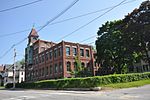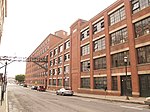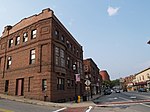WGAW
1946 establishments in MassachusettsGardner, MassachusettsMass media in Worcester County, MassachusettsMassachusetts radio station stubsNews and talk radio stations in the United States ... and 3 more
Radio stations established in 1946Radio stations in MassachusettsUse mdy dates from July 2023

WGAW (1340 AM) is a radio station licensed to Gardner, Massachusetts. Established in 1946 as WHOB, the station is owned by Steven Wendell and carries a talk radio format.
Excerpt from the Wikipedia article WGAW (License: CC BY-SA 3.0, Authors, Images).WGAW
Nonn,
Geographical coordinates (GPS) Address Website Nearby Places Show on map
Geographical coordinates (GPS)
| Latitude | Longitude |
|---|---|
| N 42.5925 ° | E -71.988888888889 ° |
Address
St. Georg
Nonn 44
83435
Bayern, Deutschland
Open on Google Maps











